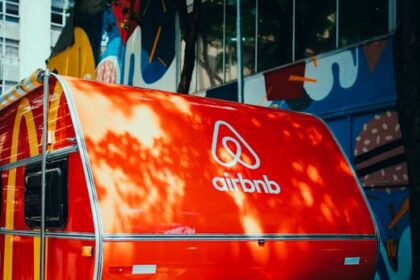Understanding Local SEO and Vertical Growth. Local Search Engine Optimization (SEO) is a specialized subset of SEO that focuses on improving a business’s visibility in local search results. Unlike traditional SEO, which often targets a global or national audience, local SEO zeroes in on customers in specific geographic areas. For businesses aiming for “vertical growth,” this distinction becomes paramount. Vertical growth, in this context, refers to expanding deeper within an existing market segment or launching new, related product lines or services to an existing customer base, or even to a new, adjacent demographic within a defined geographic region. It’s about intensifying market penetration, increasing average customer value, or diversifying offerings within a focused industry or niche.
The intersection of Local SEO and vertical growth is where strategic advantage is found. For instance, a local plumbing company might typically offer general repair services. Vertical growth for them could involve specializing in high-efficiency boiler installations, expanding into commercial plumbing for local businesses, or adding emergency flood restoration services. Each of these expansions requires targeting a slightly different, yet related, customer intent, often within the same geographical confines. Local SEO provides the precise tools to communicate these new or deepened offerings to the right local audience at the exact moment of their need. When a potential customer searches for “high-efficiency boiler installation [city name]” or “commercial plumbing services near me,” a robust local SEO strategy ensures the business appears prominently.
Local SEO is uniquely powerful for vertical expansion due to its inherent focus on proximity, high purchase intent, and the cultivation of local trust. Proximity is critical; local search queries are often characterized by immediate need and a strong preference for nearby solutions. As a business expands its vertical offerings, local SEO ensures these new services are presented to the geographically relevant audience. High purchase intent is another cornerstone. Users performing local searches, especially those including terms like “near me,” “best [service] in [city],” or “open now,” are typically in the later stages of the buying cycle. By optimizing for these precise, vertically-aligned keywords, businesses capture high-quality leads. Lastly, local SEO builds trust through mechanisms like Google Business Profile (GBP) reviews, local citations, and community engagement. As a business diversifies its services, leveraging existing local trust makes it easier to gain acceptance and generate demand for new offerings. It’s a testament to established reputation, making it less risky for consumers to try a new service from a known local entity.
Foundational Pillars of Local SEO for Scalability. Scaling vertical growth requires a strong local SEO foundation, beginning with meticulous Google Business Profile (GBP) optimization. GBP is the cornerstone of local visibility, acting as the primary digital storefront in local search results and Google Maps. For vertical growth, comprehensive setup goes beyond basic NAP (Name, Address, Phone) consistency. It demands strategic selection of primary and secondary categories that accurately reflect current and expanding service lines. For a plumbing company expanding into HVAC, “Plumbing Service” might be primary, but “HVAC Contractor” or “Air Conditioning Installation Service” become crucial secondary categories, signaling the expanded vertical. Services and products listed within GBP must be exhaustive and detailed, mirroring every new offering. This includes specific pricing, descriptions, and even links to dedicated service pages on the website.
Advanced GBP features are invaluable for vertical expansion. Google Posts can be used to announce new services, offer promotions specific to a newly targeted niche (e.g., “20% off commercial kitchen grease trap cleaning this month”), or highlight successful projects within the new vertical. The Q&A section offers an opportunity to pre-emptively address common queries related to new services, building authority and transparency. Photos and videos are critical; they should visually showcase the expertise in the new vertical, demonstrating equipment, completed projects, or team members performing specific tasks related to the expanded offerings. For businesses with multiple locations or distinct vertical operations under one umbrella, managing multiple GBP listings or carefully segmenting services within a single profile becomes a complex but necessary task. Each location or specific service line might benefit from its own optimized GBP, tailored to its unique offerings and target audience within the local geography.
Beyond GBP, NAP consistency across the entire web is paramount. Inconsistent information (even a slight variation in address abbreviation or phone number formatting) can confuse search engines, dilute authority, and negatively impact local rankings. Tools like Moz Local, BrightLocal, or Semrush Listing Management can help audit and correct inconsistencies across hundreds of directories. For multi-vertical businesses, ensuring that the NAP details are consistent for each specific service location or even distinct service department (if applicable) is crucial, providing clarity to search engines and potential customers.
Local citations and directories extend the reach and validate the existence of a business across the web. While generic directories like Yelp and Yellow Pages are important, for vertical growth, identifying and leveraging niche-specific directories is vital. If expanding into legal services for startups, inclusion in a local entrepreneur directory or a specific bar association’s online directory enhances credibility within that vertical. Industry associations, local chambers of commerce, and local business groups often have online directories that provide powerful, relevant backlinks and citations. These not only boost SEO but also foster trust and visibility within the targeted vertical community.
On-page local SEO forms the website’s backbone for capturing local intent within new verticals. Location-specific landing pages are essential. For a business expanding its service area or adding a new service in a specific town, a dedicated landing page for “AC Repair in [Neighboring Town]” or “Commercial HVAC Services in [Industrial Park Name]” is necessary. These pages must be unique, detailed, and optimized with local keywords relevant to the new offering, demonstrating expertise and relevance. Service area pages are crucial for businesses that serve a wider region without physical locations in every town; they clearly define the geographical scope of the new or existing services.
Schema Markup is a powerful, yet often underutilized, tool for local SEO and vertical growth. Implementing Local Business Schema helps search engines understand critical information about the business (address, phone, opening hours). For vertical expansion, integrating Product or Service Schema on relevant pages provides granular detail about specific offerings. For instance, a page detailing “Residential Electrical Rewiring” could use Service Schema to specify the service type, price range, and areas served. Event Schema can be used for local workshops or open houses related to new service launches. Properly implemented schema enhances visibility in rich snippets, knowledge panels, and improves click-through rates by providing more appealing search results. Content optimization on these pages requires careful keyword research, identifying long-tail queries and specific local phrases that align with the new vertical’s customer needs. This includes incorporating neighborhood names, landmarks, and local events naturally within the text.
Content Strategy for Vertical Expansion via Local SEO. A robust content strategy is the engine driving local SEO for vertical growth, moving beyond mere keyword stuffing to deliver genuine value to the local audience interested in new or deeper services. Hyper-local content creation is key. This involves crafting blog posts, articles, and guides that address specific problems or interests within the local community that align with the expanded vertical. For example, if an IT service company expands into cybersecurity for small businesses, they might publish “5 Cybersecurity Threats Facing Small Businesses in [City Name]” or “Understanding Data Privacy Laws for Local [Industry] Businesses.” This content not only ranks for local queries but also positions the business as a thought leader in the new vertical within its geographic area.
Guides, checklists, and FAQs are particularly effective for niche services. A landscape design company venturing into sustainable gardening might create a “Guide to Xeriscaping for [Local Climate] Homeowners” or a “Checklist for Starting a Community Garden in [Neighborhood].” These resources answer common questions, address specific local challenges, and demonstrate expertise in the expanded domain, drawing in an engaged audience. Integrating content about local events, sponsorships, and community involvement also strengthens local ties. Announcing participation in a local charity run, sponsoring a school team, or hosting a community workshop related to the new service all provide opportunities for localized content that resonates with the target audience and reinforces local identity.
User-Generated Content (UGC) and reviews are indispensable for local trust and vertical-specific validation. Reviews, especially those on GBP and other relevant local directories, are critical social proof. For new services or expanded verticals, soliciting reviews specifically for those offerings is crucial. After completing a new type of installation or providing a specialized service, encourage customers to mention the specific service in their review. For instance, a review for a home renovation company might specifically praise their “kitchen remodeling expertise” or “new bathroom addition services.” Strategies for soliciting reviews can include post-service emails with direct links, in-person requests, or even subtle signage.
Responding to reviews, both positive and negative, with a local and vertical lens further builds trust. Acknowledge the specific service performed and the local context in your response. For a positive review about a new commercial cleaning service, a response might be, “Thank you, [Customer Name]! We’re thrilled your office building in [Neighborhood] is sparkling thanks to our specialized commercial cleaning team.” Negative reviews, while challenging, offer an opportunity to demonstrate responsiveness and commitment to customer satisfaction. Addressing concerns professionally and offering solutions can turn a negative experience into a positive perception. Showcasing testimonials, particularly those that highlight success stories related to the new vertical, can be strategically placed on dedicated service pages to instill confidence in potential customers.
Visual content and local storytelling elevate the local SEO strategy. High-quality images and videos are crucial for showcasing expertise and building rapport. This includes photographs of the team in action, facilities, new products, and clear demonstrations of service delivery in a local context. A local bakery expanding into custom wedding cakes should feature mouth-watering images of their creations, perhaps set in popular local wedding venues. Virtual tours of physical locations, especially if new facilities are acquired for vertical expansion, offer transparency and immersion. Before-and-after photos for services like landscaping, renovation, or detailing vividly demonstrate the value proposition. Visuals depicting community involvement – team members volunteering, participating in local events, or interacting with the community – strengthen local bonds and reinforce the business’s identity as a part of the fabric of the community.
Leveraging Backlinks and Local Link Building. Backlinks remain a critical ranking factor in SEO, and for local SEO and vertical growth, their local relevance and quality are paramount. Building local authority requires strategic link-building efforts focused on the geographic area and the specific vertical. Collaborations with other local businesses offering complementary services can lead to valuable link opportunities. For instance, a local real estate agent could partner with a home staging company or a moving service, exchanging links or co-creating content. This creates a natural network of trusted local businesses that benefit each other.
Sponsorships of local events, sports teams, or community initiatives not only provide goodwill and brand visibility but also often result in valuable backlinks from event websites or local media coverage. A local car repair shop sponsoring a high school football team might get a link from the school’s sports page, indicating their support for the community. Issuing local press releases for significant milestones related to vertical growth – such as the launch of a new specialized service, the hiring of experts in a new field, or opening an additional facility dedicated to the new vertical – can generate media coverage and backlinks from local news sites.
Guest posting on local blogs or industry-specific local publications offers another avenue for earning authoritative backlinks. If a financial advisor expands into estate planning, they could write an article for a local newspaper’s online portal or a blog focused on senior care in the community, providing valuable information and linking back to their new estate planning service page. Hyper-local outreach involves identifying and engaging with local influencers or community leaders who have an audience relevant to the new vertical. This could be a popular local blogger, a chamber of commerce president, or a well-regarded non-profit director. Building genuine relationships with these individuals or organizations can lead to mentions, social shares, and eventually, valuable links. Similarly, building relationships with local charities or non-profits through donations, volunteering, or partnerships can yield reciprocal links and enhance the business’s community standing, indirectly boosting local SEO.
Technical Local SEO Considerations for Scale. For businesses pursuing vertical growth, technical SEO must scale seamlessly across new service offerings and potentially new locations. Mobile-first indexing and responsiveness are non-negotiable. A vast majority of local searches occur on mobile devices, making a fast, intuitive, and responsive website essential. Google primarily uses the mobile version of a site for indexing and ranking. Businesses must ensure that all new service pages or location-specific content are perfectly optimized for mobile, with quick loading times, easy navigation, and tap-friendly calls-to-action. Sluggish mobile sites will deter users and negatively impact local rankings.
Site architecture needs careful consideration for multiple locations or diverse service lines. A clear, logical hierarchy is crucial for both users and search engines. For new services, creating dedicated subdirectories (e.g., yourdomain.com/services/new-service-name/) or subdomains (e.g., newservice.yourdomain.com) helps organize content. While subdomains can signal distinct entities, subdirectories are generally preferred for SEO, as they consolidate domain authority. Each new service line or location page should be easily accessible through intuitive navigation menus, internal links, and a well-structured sitemap. This ensures that search engines can efficiently crawl and index all new content related to vertical expansion.
Geo-targeting and Hreflang tags become relevant for businesses operating in different regions or serving multilingual communities within a local area. If a business expands its services to an adjacent city with a significant Spanish-speaking population, implementing Hreflang tags ensures the correct language version of a service page is served to users based on their browser settings or location. For broader geo-targeting, ensuring that Google Search Console’s international targeting is correctly set can help signal the primary target region.
Website speed optimization is a perpetual technical SEO concern, and its impact on user experience and ranking is significant, especially for local searchers who often need quick information. Strategies include optimizing image sizes (compressing images for new service pages), leveraging browser caching, minimizing CSS and JavaScript files, and considering a Content Delivery Network (CDN) for faster content delivery to users regardless of their geographical proximity to the server. A slow website frustrates users and can lead to higher bounce rates, signaling poor user experience to search engines. For a business launching a new, detailed service, ensuring the new content pages load quickly is critical for capturing and retaining user attention.
Advanced Strategies for Vertical Growth. As businesses mature and seek deeper vertical penetration, advanced local SEO strategies become essential. Voice search optimization is increasingly critical. The rise of voice assistants means local search queries are becoming more conversational and longer-tail. Users might ask, “Hey Google, where can I find a trustworthy pet grooming service that handles large dogs near me?” or “Siri, what’s the best local organic grocery store with vegan options open now?” Optimizing for voice search involves creating content that answers specific questions directly, using natural language, and focusing on long-tail conversational keywords. This includes extensive Q&A sections on service pages, optimizing for “near me” phrases, and ensuring GBP information is meticulously updated, as voice queries often pull directly from these profiles.
A deeper dive into Schema Markup offers significant opportunities for vertical growth. Beyond basic Local Business Schema, implementing specific schemas for products, services, events, or even organizations enhances a business’s visibility in rich snippets and knowledge panels. For a restaurant expanding into catering, Service or Offer Schema can describe catering packages, pricing, and service areas. A healthcare provider introducing a new specialized treatment can use MedicalCondition or MedicalProcedure Schema to provide structured details to search engines. This structured data makes information easier for search engines to understand, leading to more prominent and appealing search results, driving higher click-through rates for specific vertical offerings.
Personalization and User Experience (UX) are crucial for converting local searchers into customers. Tailoring content and offers based on a user’s location and previous interactions can significantly improve engagement. For instance, displaying different service offerings on a website based on the user’s detected IP address, or showcasing testimonials from customers in their specific neighborhood, creates a highly relevant experience. CRM integration with marketing efforts allows for hyper-targeted local marketing, sending personalized emails about new services to customers in specific zip codes who have previously expressed interest in related offerings.
Competitive local SEO analysis is an ongoing process that becomes even more vital during vertical expansion. Identifying local competitors within the newly targeted vertical segment involves not just looking at direct competitors but also businesses that might indirectly compete for the same customer attention within that niche. Analyzing their GBP profiles (categories, services, reviews), their website content (keywords, landing page structure for similar services), and their local link profiles reveals opportunities and gaps. If a competitor offers a unique service that you don’t, it might indicate a market demand. Conversely, finding a niche service with low competition suggests an opportunity for differentiation. This analysis helps refine keyword strategies, identify potential local link-building partners, and uncover unique selling propositions for the new vertical.
Measuring and Iterating for Vertical Success. Sustained vertical growth through local SEO necessitates rigorous measurement and continuous iteration. Key Performance Indicators (KPIs) provide the essential metrics for assessing progress. Google Business Profile Insights are a goldmine for local SEO performance. Track “how customers search for your business” (direct, discovery, branded) and “where customers view your business” (search, maps). Crucial engagement metrics include “customer actions” like website clicks, requests for directions, and direct calls. These directly reflect local search intent and conversion.
Beyond GBP, monitor local pack rankings and broader organic local rankings for relevant keywords, especially those tied to new vertical offerings. Tools like Semrush, Moz Local, BrightLocal, or even simple manual searches can track these positions. Website traffic from local searches, identifiable through Google Analytics by segmenting organic traffic from specific geographic locations, indicates the effectiveness of on-page and technical local SEO efforts.
Ultimately, the most critical KPIs are conversions: leads generated, sales attributed to local channels, and appointments booked. Implementing robust attribution modeling is paramount to understand the full customer journey from local search to conversion. This means going beyond last-click attribution to understand the influence of local search across multiple touchpoints. Did a customer first discover the new service through a GBP listing, then click through to the website, and later convert? Multi-touch attribution provides a more holistic view of local SEO’s impact on vertical growth.
Utilizing a suite of tools for local SEO monitoring and reporting is essential. Google Analytics tracks website traffic, user behavior, and conversions. Google Search Console reveals search queries, indexing status, and technical issues. GBP Insights offers direct performance data for the business profile. Third-party local SEO tools like Semrush’s Local SEO, Moz Local, BrightLocal, Yext, or Synup provide centralized dashboards for NAP consistency, citation management, review monitoring, and rank tracking across multiple locations or service lines. These tools streamline the process of identifying areas for improvement.
A/B testing local SEO elements allows for data-driven optimization. Experiment with different GBP descriptions, photo sets, or even the order of services listed to see which variations generate more engagement. On dedicated local landing pages for new verticals, test different calls to action, hero images, or content layouts to optimize conversion rates. Small, incremental improvements based on A/B testing can lead to significant gains over time.
Finally, adapting to algorithm changes is a continuous requirement. Google frequently updates its search algorithms, including those specific to local search (e.g., the “Local Search Update” or changes to review prominence). Staying informed through industry news, SEO blogs, and Google’s official announcements allows businesses to anticipate and react to changes. Continuous optimization and adaptation are not merely buzzwords but practical necessities for maintaining and accelerating vertical growth through local SEO. This involves regular audits of GBP, website content, technical SEO elements, and link profiles, ensuring they remain aligned with best practices and evolving search engine expectations. This iterative process of refinement, measurement, and adaptation ensures that local SEO continues to be a powerful driver for expanding market reach and deepening service offerings within specific geographic segments, fueling sustainable vertical growth.











